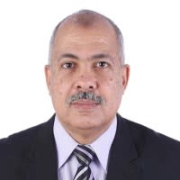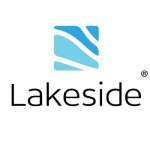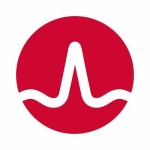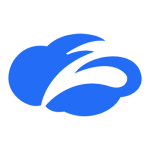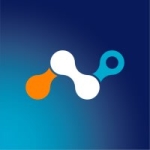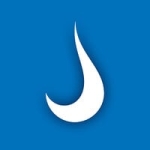What is our primary use case?
We use Nexthink to give us information on events on end-user laptops. We turn that into several use cases, such as more intelligent hardware refresh purchasing, and we have established a proactive support model.
But really, it's about understanding the digital experience by creating a digital experience score and using that score to create a happier and more productive employee base. We're still quite young in that respect, but we're in the process right now of creating a customer experience analytics team, whose job it will be to measure and enhance the digital experience score.
We deploy it on-premises. We have a number of virtual machines within our environment that host the Nexthink engines. The laptops have a collector, a small agent that's very lightweight, that sends information up to the engines.
How has it helped my organization?
Within IT support we have a very reactive organization, but with the Nexthink tool, we're able to start building proactive support. We are also enabling our security teams, our IT service desk, and our testing teams to be more effective through the use of Personas. We haven't developed Personas yet, but that's something we're about to do.
In the UK, we used one of the dashboards in the solution to identify a problem at one of our Scottish offices. It turned out that the network infrastructure in that office wasn't up to requirements for a particular application that we're using. The initial thought was that the application was at fault. But when we looked across the country, using dashboards, we found, "Well actually, in most places the application is fine. It looks good. However, we can see that in this particular Scottish office we're receiving lots of red scores and poor performance." We worked with the network team to figure out that it was actually the infrastructure. The dashboards are very useful and the solution is very good.
One fantastic use case for us was when we were due to purchase 95,000 laptops globally with 512GB SSDs, we used Nexthink data to view disk utilisation and discovered that 98% of users would not need more than 256GB. This works out to saving of around $5.4M per annum. This use case illustrates an aspect of the power of the Nexthink tool. It’s also a very simple investigation to create and one that organisations can execute almost immediately following deployment of collectors to their environment.
What is most valuable?
The most important factor is the data collection, and that's the simplest part of it. But what we do with that data, what is most useful, are things like experience scoring, hardware purchasing, and enhancing support services.
The solution’s visualizations are very good. It's very easy to use them. We're currently developing a three-tiered training model for different levels of consumer. The most basic version of that is purely dashboard. We can give our senior managers, our directors, and our partners a dashboard at a very high level. They can very easily start to drill down by clicking through the dashboard and find stuff that doesn't look right. And our technical teams can use the same thing to identify problems in specific locations.
What needs improvement?
We have provided them feedback on a few changes we would like to see with how alerting can work. Rather than have somebody looking at the network, if network utilization goes above a certain point, it would be helpful if the solution issued an alert to the right people.
There are a few other types of technical improvements that we've requested. There is really good learning material in the Nexthink Academy. However, turning that into real action is something that needs to be worked on.
For how long have I used the solution?
We've been using Nexthink for close to three years.
What do I think about the stability of the solution?
We very rarely have issues with the solution's stability. We had a situation where our portal went down one time, but I can count on one hand how many times we've had major issues with the tool in the last two to three years.
What do I think about the scalability of the solution?
It is scalable. If you've got the on-prem environment, it's usually a case of adding more engines, but if you're in the cloud environment it's highly scalable, and that is all managed on their side.
We've got 27,000 endpoints in the UK. We are planning on increasing our usage. We haven't decided on this, but we've looked at the server, having collected deployed servers, and we've also talked with Nexthink about potentially moving to mobile in a year or two. Nexthink haven't got a fully developed solution for mobiles yet, so we're talking about it to see what opportunities there may be, rather than having actually decided what we're going to do in that regard.
How are customer service and technical support?
I would rate their tech support during deployment and post-deployment, both, very highly. We've logged a couple of incidents with their tech support and they've been really good, really on the ball. The support contact they gave us was exceptional, very good, very knowledgeable.
Which solution did I use previously and why did I switch?
We did not have a previous solution.
How was the initial setup?
We found it quite straightforward to stand up our virtual machines to host the engines. And if we need to expand to them, it's quite straightforward to do that as well. Most companies will be purchasing in the cloud environment, and the deployment of the cloud environment is obviously much easier.
I didn't do the deployment. It was somebody else in our area. But we implemented several engines across several virtual machines and we rolled out. We packaged up the collector and then we rolled that out to every single laptop in our environment.
In terms of infrastructure maintenance for the solution, we have one person who is responsible. There is no other maintenance involved.
What about the implementation team?
We had a project manager run the deployment internally, but we also worked with a Nexthink technical specialist.
What was our ROI?
With the case I mentioned earlier about the hard drives, we've avoided costs that would have been more than the tool costs. It's not extra money in the bank, but it's money we haven't spent. It wasn't guaranteed that the hard drive upgrade proposal was going to go through, so it's not generally considered, internally, as true ROI, but it's a great example of where we potentially avoided a lot of cost.
What's my experience with pricing, setup cost, and licensing?
Nexthink can pay for itself quickly if you identify and complete the most valuable use cases. The tool can do so much that to purely compare the price in a static way to other tools in your arsenal would be a mistake. If you do a more dynamic comparison that’s based on the overall functionality and use cases possible then it comes out cheaper. You need to consider it a relative measurement against potential use cases, size of the organization, maturity of organization, etc.
Which other solutions did I evaluate?
We investigated a few. Lakeside Software was one of them. We also looked at HappySignals, but it doesn't do the same thing, and we looked at HP TechPulse, as well as a few others. The biggest contender was Lakeside Software, but Nexthink was much more preferable.
The main difference for us was actually the people at Nexthink, the way we found they engage with their customers. Nexthink's approach is very much, "Understand what your objective is for your organization, and then make sure the entire approach is tailored towards helping you achieve what you want to achieve." It doesn't feel like a typical vendor relationship. It feels very much like you're part of the same team, and that's really what set them apart because that's how we work. We like to work in teams. We don't want to just be on the phone with a vendor. We want to be on the phone with someone who cares about helping us achieve what we want to achieve.
What other advice do I have?
Overall, it has helped save us time. You have to make a time investment to get the skills within your organization to make best use of the tool. My recommendation is that if organizations want to take digital experience management seriously, they need to have people in place whose job it is to do that. You do have to make that type of time and financial investment. But we have saved time using Nexthink.
We're actually in the process right now of building the team, those dedicated people, around it. We spent the last two to three years doing it as more of a side-of-desk activity. We've managed to achieve what we've achieved just with that. By putting people in place to do it, we're going to be able to achieve much more, and actually tie some process around it to make sure that we're measuring the value by time and money.
If you are implementing Nexthink, make sure that you've got people who are able to take ownership of the tool internally, who will be its internal ambassadors, and spend the time to learn the tool to make sure that you do it right. Don't look at the tool as a siloed operation. Don't only look at it from the point of view of improving your security or your end-user computing team, or your service desk. Look at the bigger picture. There are tons of use cases for Nexthink. It often comes down to only being limited by the ideas you can generate. There's a lot in there. The people who are going to use the tool on a day to day basis should go through the Nexthink Academy and learn as much as they can there. They should also pay attention to the Nexthink Library, to understand what out-of-the-box packs are available there.
For us, the lessons we've learned are less about Nexthink and more about experience management. Nexthink is one of the major tools we're using in our experience management strategy. The mistake we've made from the experience management perspective is not having a senior owner of experience, like a chief experience officer. That's really been a mistake because we have had no unity across IT, or enabling functions. As a result of that, we've had lots of different people doing lots of different things. You need a senior-level owner and you need a strategy. Those are really our two lessons learned. At the moment, we've got a strategy, and we have people at the senior level who want us to do great things with it, but we still don't have a senior owner of experience, which is where Nexthink does its best work.
We use it across Windows and Mac machines. The Windows collector can do a lot more than the Mac. However, each new version that Nexthink releases brings Mac closer to parity with Windows. We don't use it on mobile and we have limited use across different types of applications. For example, we're not really using it to its max potential for SaaS products right now. But if we move to the cloud product, which we would like to do, then we'll make better use of it, at that point, for SaaS solutions.
Nexthink provides you with real-time and actionable insights into the IT experience of all employees, but you need to make sure you've got people with the requisite skills to interpret that. There are the two types of data: the hard data and the soft data. You have the events coming from the machine, and then you've got more of the sentiment-type stuff where you're engaging with your customer base to hear what they have to say. Nexthink comes with a digital experience score out-of-the-box, but we have found that we are having to optimize that for our environment to get a score that actually represents what the user is experiencing.
It provides analytics for detailed event data to help you pinpoint issues and find the root cause. However, the basic analytics won't necessarily tell you the solution. They will tell you what's going on, but you still need to find a solution. Nexthink do have playbooks in their repertoire that give you recommendations for what the solution may be, but we're not using those right now.
We do have some involvement with the solution's AI-driven insights, but we haven't really achieved many great successes with it just yet. That's an area that we're still exploring. We're looking a lot at the AI-driven, proactive and predictive support elements.
I struggle to say 10 out of 10, because that seems almost impossible for any company. But, yes, I would say it's a 10. They've got the people and the culture within the company. They are growing and are ambitious and they're very focused on product enhancements. They listen to the customer, and they will develop the tool, generally speaking, in the way that the customer wants. They are adaptable to our operating model. The tool itself does tons of stuff.
Which deployment model are you using for this solution?
On-premises
Disclosure: PeerSpot contacted the reviewer to collect the review and to validate authenticity. The reviewer was referred by the vendor, but the review is not subject to editing or approval by the vendor.



